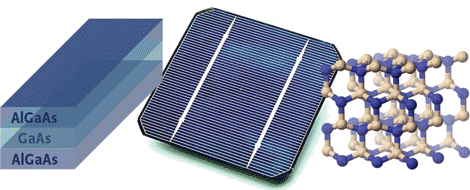84030 AC field Hall option
The traditional DC field Hall measurement methodology, while sufficient for studying a wide range of materials, is limited to measuring Hall mobilities down to about 1 cm2/V s. This makes it impossible to measure materials that are characterized by very low mobilities such as photovoltaic, thermoelectric, and organic electronic materials. The exclusive 84030 AC field measurement option breaks through the barriers of traditional DC field Hall measurements. It extends your Hall mobility measurement capabilities down to 0.001 cm2/V s, allowing you to measure these low mobility materials with far greater resolution.
The AC field Hall measurement option is compatible with the 84031 high resistance measurement option, as well as all temperature options (with some reduced operation). It is not compatible with the 84033 low resistance measurement option.
AC field expands measurement range
Many contemporary semiconductor and electronic materials are being developed for applications including photovoltaic (solar cell) and thermoelectric materials, new display technologies, organic electronics, and high power devices. The electronic properties of these materials are increasingly difficult to measure. In fact, current DC field electronic transport property measurement systems cannot measure many of these materials due to their low charge carrier mobilities and the high temperatures needed to characterize high power devices. A new measurement method is needed.

This emerging class of materials typically have mobilities below 1 cm2/V s. The challenge is to extract the diminishingly small Hall voltage from the background noise they produce. Lake Shore and Toyo have collaborated to develop the 8400 Series Hall effect measurement system (HMS), with an AC field Hall measurement option capable of measuring mobilities down to 0.001 cm2/V s. This offers a significant breakthrough in research productivity, allowing these materials to easily be measured.
The AC field measurement option provides a range of Hall measurements on van der Pauw samples. The standard system is capable of DC field measurements and has a resistance range from 0.5 mΩ to 10 MΩ. AC field capability tops the list of an assortment of options including variable temperature assemblies, high and low resistance, and optical access. These add-ons broaden your measurement opportunities and simplify experimental processes. The 8400 Series HMS provides a robust platform to which you can add new features as your material measurement needs evolve.
An international collaboration

Lake Shore Cryotronics, Inc. and Toyo Corporation in Japan have served the scientific community for a total of nearly a century. And for about fifty years combined, both companies have provided high performance Hall effect measurement systems to researchers in academia, national labs and industry so that they can measure the electronic and magneto-transport properties of the novel electronic materials they are developing. The AC measurement technology offered in the Model 8404 has been adapted from techniques proven in Japan for over 15 years. Lake Shore and Toyo Corporation combined the unique strengths of both company’s products and jointly developed a new AC and DC field HMS with performance that is unparalleled in the industry.
Fields of Study and Research
The 8400 Series HMS combines the best of both DC and AC field Hall measurement methodologies to facilitate the broadest range of research applications. Optional variable temperature modules and measurement platforms extend the utility of your HMS
by allowing you to configure your system to meet your specific needs.
Photovoltaic and thermoelectric applications
Photovoltaic (solar cell) and thermoelectric materials are often characterized by low mobilities. This characteristic makes them difficult or impossible to measure using traditional DC field Hall methods. The 8400 Series with AC field Hall measurement
option makes it possible to easily characterize these materials.
Organics
The AC field measurement option of the 8400 Series provides an opportunity, not easily realized until now, to reliably measure the Hall effect in low mobility organic electronics. These materials are the basis for printable and flexible electronic devices, as well as organic light emitting diodes and organic solar cell materials.

